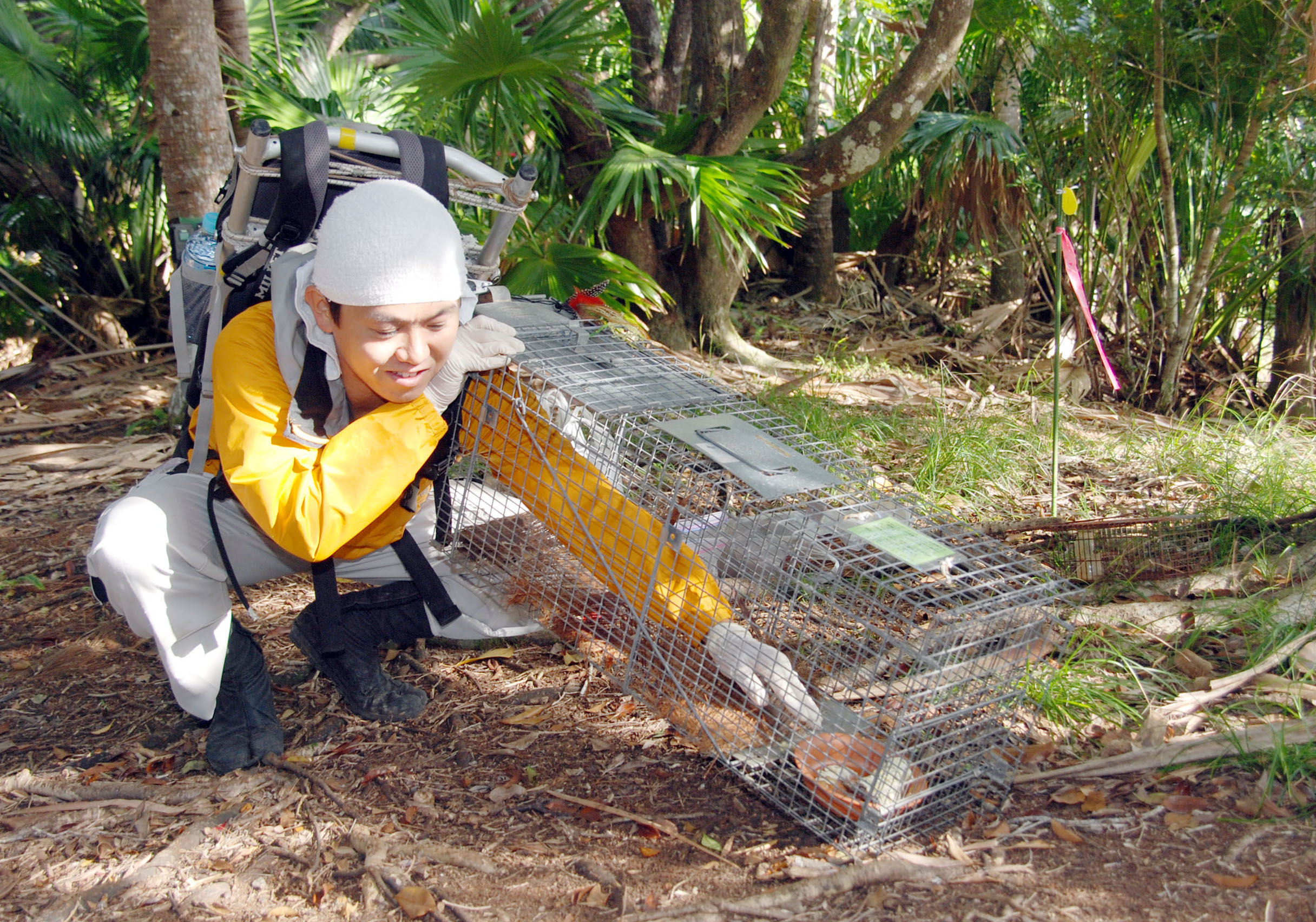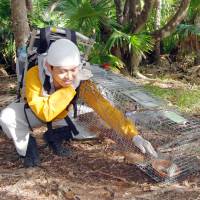Conservation groups are stepping up efforts to capture all of the feral cats living in the Ogasawara Islands in an effort to protect indigenous rare birds.
The island chain, also known as the Bonin Islands, lies about 1,000 km south of Tokyo.
More than 400 feral cats, descendants of pets brought to the islands, have been captured over the past decade and sent to animal hospitals for checks before being adopted by new owners.
Fewer cats meant that there was a sharp increase in the number of local birds. But cats that have yet to be captured are so cautious they rarely get caught in the traps set by conservation workers.
The island chain, a World Natural Heritage site, has developed a unique ecosystem.
Cats that were taken to Chichijima and Hahajima, the two biggest islands in the chain, were abandoned when residents were forced to evacuate during World War II. They became feral and natural predators of indigenous rare birds, such as endemic subspecies of black wood pigeons.
Volunteers started to capture te feral cats in 2005, and the national government, the Ogasawara village office, the Institute of Boninology, a nonprofit organization, and other concerns are now involved in the work.
As a result, the number of endemic wood pigeons has increased to more than 300 from around a mere 50.
Kazuo Horikoshi, head of the institute, said he was surprised by the "drastic" increase in the number of pigeons.
But the capture of feral cats has yet to be completed. On Chichijima, some 20 cats remain, including several kittens that were born recently.
"Decreased competition has made it easier for cats to find food," said Ryujiro Harada, 62, leader of the capture team. "It's getting more difficult to capture cats that have learned how to avoid traps."
Kenji Kuniyoshi, a 29-year-old capture team member, said he has constantly contrived ways to bait and trap feral cats.
"There remain very cautious cats to be trapped," he said.
The number of feral cats on Chichijima fell to less than 10 in 2013. "We should have captured all of them in light of the burden on the Tokyo Veterinary Medical Association," Harada said.
Captured feral cats are tamed at animal hospitals in Tokyo, which has governmental jurisdiction over the islands, and the association finds new homes for rehabilitated cats. As work to catch feral cats on Hahajima will be stepped up this year, more felines are expected to be sent to the association.
Noting that 140 animal hospitals are voluntarily involved in the taming program, Yasushi Komatsu, deputy chief of the association, said an approach that does not kill captured cats is rare in the world. "As veterinarians, we will continue contributing to it," he said.




